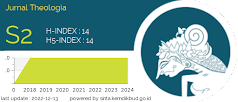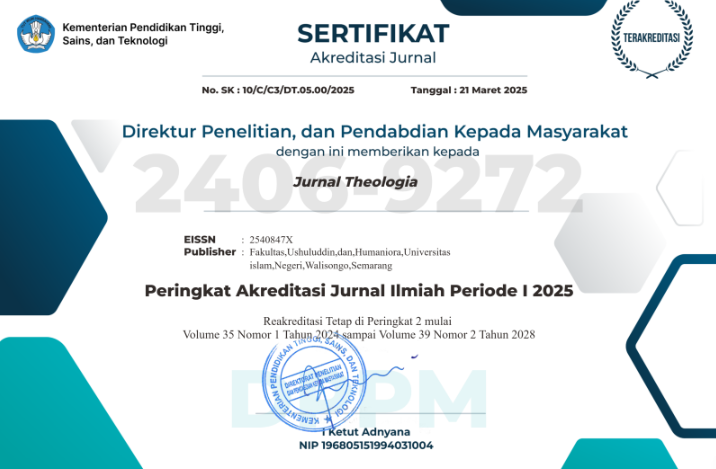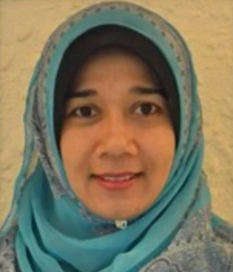KONTROVERSI JIDAT HITAM DI MADURA: Studi Penafsiran Komparatif-Sektarian QS. al-Fatḥ [48]: 29
DOI:
https://doi.org/10.21580/teo.2018.29.2.2828Keywords:
controversy, athar al-sujūd, black foreheads, sectarian interpretation, MaduraAbstract
This paper reveals athar al-sujūd’s interpretation in QS. al-Fatḥ [48]: 29 behind the controversy of the stigma of black foreheads against certain groups in Islam. This paper is a result of literature and fieldwork research based on comparative interpretation methods (tafsīr muqārin) on five tafsīr books from different schools and interviews with some figures from different religious organizations in Madura. This research has discovered that the controversy from the stigma of a black forehead was not only triggered by different interpretations of athar al-sujūd in QS. al-Fatḥ [48]: 29, but also by several hadiths narrated by Aḥmad, al-Bayhaqī, and al-Bukhārī, which cause controversy among Muslims in Madura. In fact, no group in Islam wants such controversy, either as the subject of the accuser or the accused as a group of black foreheads.Downloads
References
al-Aṣfahānī, al-Rāghib. Mufradāt Alfāẓ al-Qur’ān. Damaskus: Dār al-Qalam, 2009.
al-Baghdādī, al-Alūsī. Rūḥ al-Ma‘ānī fī Tafsīr al-Qur’ān al-‘Aẓīm wa al-Sab‘ al-Mathānī. Beirut: Dār Iḥyā’ al-Turāth al-‘Arabī, n.d.
al-Bāqī, Muḥammad Fu’ād ‘Abd. al-Mu‘jam al-Mufahras li Alfāẓ al-Qur’ān al-Karīm. Kairo: Dār al-Ḥadīth, 1364.
al-Bayhaqī, Abū Bakr Aḥmad ibn al-Ḥusayn ibn ‘Alī. al-Sunan al-Kubrā. Beirut: Dār al-Kutub al-‘Ilmīyah, 2003.
al-Bukhārī, Abū ‘Abd Allāh Muḥammad ibn Ismā‘īl. Ṣaḥīḥ al-Bukhārī. Beirut: Beirut: Dār Ibn Kathīr, 2002.
al-Dhahabī, Muḥammad Ḥusayn. al-Tafsīr wa al-Mufassirūn. Kairo: Maktabah Wahbah, 2000.
Hanbal, Aḥmad ibn. al-Musnad. Vol. 15. Kairo: Dār al-Ḥadīth, 1995.
Hasan, Akhmad Muawal. “Sayyid Qutb Mati, Tapi Idenya Abadi bagi Kaum Islam-Politik.” Tirto.id - Humaniora, 2017. https://tirto.id/sayyid-qutb-mati-tapi-idenya-abadi-bagi-kaum-islam-politik-cvvc.
Hasan, Noorhaidi. “Multikulturalisme dan Tantangan Radikalisme.” In Merayakan Kebebasan Beragama: Bunga Rampai 70 Tahun Djohan Effendi, diedit oleh Elza Peldi Taher. Jakarta: ICRP, 2009.
https://tirto.id/dahi-hitam-freddy-budiman-bx5a
https://www.youtube.com/results?search_query=hitam+di+jidat,
https://www.youtube.com/results?search_query=dahi+hitam,
https://www.youtube.com/results?search_query=bekas+hitam+di+dahi, dan
https://www.youtube.com/results?search_query=atsar+al-sujud
Jamal, Khairunnas. “Pengaruh Pemikiran Husain Thabathaba’i dalam Tafsir Al Mishbah.” Jurnal Ushuluddin 17, no. 2 (2011): 202–13. https://doi.org/
24014/JUSH.V17I2.692.
Manẓūr, Ibn. Lisān al-’Arab. Beirut: Dār al-Fikr, 1386.
Mawardi, Mawardi. “Subjektivitas dalam Penafsiran al-Quran: Fenomena Tafsir Bercorak Sektarian.” At-Tibyan: Jurnal Ilmu Al-Qur’an dan Tafsir 3, no. 1 (2018): 125–38. https://doi.org/10.32505/tibyan.v3i1.483.
Mudzakkir, Amin. “Demokratisasi, Islamisasi, dan Posisi Kaum Minoritas: Pengalaman Indonesia (1).” Politik LIPI, 2012. http://www.politik.lipi.go.id/kolom/kolom-1/politik-internasional/680-demokratisasi-islamisasi-dan-posisi-kaum-minoritas-pengalaman-indonesia-1.
al-Miṣrī, Abū al-Ashbāl Aḥmad ibn Sālim. Shadharāt al-Balāṭīn min Siyar al-Ulamā‘ al-Mu‘āṣirīn. Riyaḍ: Dār al-Kayān, 2006.
Mustaqim, Abdul. Paradigma Tafsir Feminis: Membaca al-Qur’an dengan Optik Perempuan. Yogyakarta: Logung Pustaka, 2008.
al-Naysābūrī, Abū ‘Abd al-Raḥmān Ismā‘īl ibn Aḥmad al-Ḥayrī. Wujūh al-Qur’ān. Masyhad: Majma‘ al-Buḥūth al-Islāmīyah, 1422.
Quṭub, Sayyid. Fī Ẓilāl al-Qur’ān. Kairo: Dār al-Shurūq, 2003.
Rohman, Izza. “Salafi Tafsirs: Textualist and Authoritarian?” Journal of Qur’an and Hadith Studies 1, no. 2 (2012): 197–213. https://doi.org/10.1548/QUHAS.V1I2.1324.
al-Sa‘dī, Abd al-Raḥmān ibn Nāṣir. Taysīr al-Karīm al-Raḥmān fī Tafsīr Kalām al-Mannān. Riyāḍ: Dār al-Salām, 2002.
Santoso, Budi. “Bahasa dan Identitas Budaya.” Sabda 1, no. 1 (2006): 44–49.
Sirry, Mun’im. “Berlomba-lombalah dalam Kebaikan: Tafsir 5:48 dan Diskursus Kontemporer Pluralisme Agama.” Dalam Merayakan Kebebasan Beragama: Bunga Rampai 70 Tahun Djohan Effendi, ed. Elza Peldi Taher. Jakarta: ICRP, 2009.
al-Ṭabāṭabā’ī, al-Sayyid Muḥammad Ḥusayn. al-Mīzān fī Tafsīr al-Qur’ān. Beirut: Mu’assasah al-A‘lamī li al-Maṭbū‘āt, 1997.
Thaha, Idris. “Hubungan Islam dan Politik yang Mungkin di Indonesia.” Studia Islamika 13, no. 2 (2006): 327–46. https://doi.org/10.15408/sdi.v13i2.572.
Tim Redaksi Pusat Bahasa. Kamus Besar Bahasa Indonesia. Jakarta: Gramedia Pustaka Utama, 2013.
Wahid, Abdurrahman, ed. Ilusi Negara Islam: Ekspansi Gerakan Islam Transnasional di Indonesia. Jakarta: LibForAll Foundation, 2009.
Zakarīyā, Abū al-Ḥusayn Aḥmad ibn Fāris ibn. Mu‘jam Maqāyīs al-Lughghah. 1 ed. Beirut: Dār al-Fikr, 1979.
al-Zamakhsharī, Jār Allāh Abū al-Qāsim Maḥmūd ibn ‘Umar. al-Kashshāf ‘an Ḥaqā’iq Ghawāmiḍ al-Tanzīl wa ‘Uyūn al-Aqāwīl fī Wujūh al-Ta’wīl. Riyāḍ: Maktabah al-‘Ubaykān, 1998.
Zamzami, M. Subhan. “Tafsir Ideologis dalam Khazanah Intelektual Islam.” Mutawātir: Jurnal Keilmuan Tafsir Hadis 4, no. 1 (2014): 163–77. https://doi.org/10.15642/mutawatir.2014.4.1.163-177.
Zaprulkhan, Zaprulkhan. “Relasi Agama dan Negara dalam Perspektif Islam.” Walisongo: Jurnal Penelitian Sosial Keagamaan 22, no. 1 (2014): 105–32. https://doi.org/10.21580/WS.22.1.261.
Zuhdi, Muhammad Harfin. “Fundamentalisme dan Upaya Deradikalisasi Pemahaman al-Qur’an dan Hadis.” Religia 13, no. 1 (2010): 81–101. https://doi.org/10.28918/religia.v13i1.176.




















